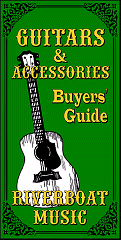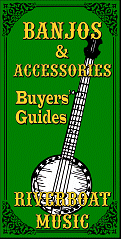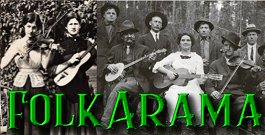
PART 2 - A7, the D Chord's BFF
| Please Read: How to Help Our Site at No Cost to You - Some of our articles contain recommendations for products we like and vendors we personally trust. Some of those vendors may pay us a very small commission if you click on a link and buy their products. This costs you nothing at all and helps offset the costs of what we do. So if we point you to something you decide to buy later, please make certain you come back through our site and click on the link directly. Thanks. |
| This Site is a Cookie-Free Zone - Except for discussion forums that you have to expressly register for, none of our pages use cookies of any kind. Some of the vendors we link to do, but that won't affect you unless you click on a link to their pages. Your continued use of this page indicates that you agree to our policy. For details, click here. |



|


3 Magic Cords, Part 2: A7, the D Chord's BFF
This is a follow up to "3 Magic Chords, Part 1," which invites you to get started on guitar by learning a basic, common, and useful chord.
This series, in turn, is part of the "VERY Basic Guitar subset of our "How To Folk" articles. In an effort to "jump start" your enjoyment of Folk music and your ability to join in, no matter what instrument you play, we are providing some very basic notes about guitar chords.

 Note: - This part of the Folkarama page, which is dedicated to helping beginners "get into" Folk music and join Folk communities as easily as possible, with simple articles and links to resources that provide hands-on instruction in traditional acoustic instruments.
Note: - This part of the Folkarama page, which is dedicated to helping beginners "get into" Folk music and join Folk communities as easily as possible, with simple articles and links to resources that provide hands-on instruction in traditional acoustic instruments.
Folkarama, in turn, contains many references to more extensive articles and resources in Paul Race's CreekDontRise.com site, as well as other related pages.
 A7 in its Simplest Form
A7 in its Simplest Form
Once you've mastered the D chord (in Part 1), it's time to move on to other chord you're most likely to use in the key of D. In fact, A7 is so common in the key of D that it is called the "Dominant Seventh" chord in that key. More about that later.
A7 is a variation of the A chord, which we will also say more about elsewhere. When you're playing in the key of D, it's usually the second most used chord. It's also the easiest chord to go back and forth to from the D Chord.
Best of all, there are lots of songs you can play with just those two chords.
To change from D to A7, all you have to do is:
- Pick up your ring finger.
- Move your first and second finger over one string, keeping the gap between them.
To change back, you just do the reverse:
- Move your first and second finger over one string, keeping the gap between them.
- Put your third finger down on the second string, just behind the third fret.
 Songs You Can Play With Just D and A7 - One of easiest songs to play with two chords is "Buffalo Gals." We're giving you an MP3 file and sheet music to help you get a sense of where the chords change.
Songs You Can Play With Just D and A7 - One of easiest songs to play with two chords is "Buffalo Gals." We're giving you an MP3 file and sheet music to help you get a sense of where the chords change.
- To hear an instrumental version, click here.
- To download a lead sheet (showing the melody and chords), click here.
Other songs you can play with just D and A7 include "Go Tell Aunt Rhody," "Down in the Valley," "My Darlin' Clementine," "Down at the Station," "Tom Dooley," and "He's Got the Whole World in His Hands." We have a downloadable lyric sheet with the words and chords for several of these songs here.
Songs that can be sung with only 2 chords include "Darlin' Corey," "Rovin' Gamber," "Bring Me a Little Water, Silvie," and "Hallelujah I'm a Bum" (or "Revive Us Again.").
That said, once you learn the G chord, there are ways to make most of those sound a little more interesting.
Practicing - If this seems like a short "lesson" compared to the previous one, keep in mind that learning to change chords quickly, even between D and A7, requires establishing "muscle memory," and that takes practice. So learn "Buffalo Gals," and practice playing any of the other songs you know from the above lists.
Taking breaks whenever you think you're in danger of forming a blister, practice until you can change chords without having to stop and think about it. Once you've got the D-A7-D changes "internalized," it will actually be easier to learn and incorporate other chords.
When you need to move on, go to PART 3 - G, the D Chord's Other Best Friend.
Conclusion
These suggestions are just a start, of course. But for all of its variations and even contradictions, Folk music is a discipline in itself, and a rewarding one of that. The more you play, sing, practice, and hang, the more you'll get out of it, the faster you'll learn in the future, and the better you'll be at whatever you already do have "under your belt."Other Resources
There are plenty of guitar instruction materials, online, of course. But we are working on a few that will help you learn the most basic, but necessary, information quickly.The current resources we have published are:
- Meet Your Guitar - a very basic intro to holding, tuning, and picking the guitar.
- Three Magic Chords - a three-part series to introduce enough easy guitar chords to get you started on playing hundreds of 2- and 3-chord songs. Articles include::
- 3-Chord Songs in D - A list of songs you can easily play in D, using G and A7. (When you get a little farther along, you can also play many of them in E, using E, A, and B7. Or in C, using C, F, and G7. Yes, we will show you all of those chords eventually.)
- What is a Three-Chorder? - Explains "3-chorders," and how understanding them will help you learn or follow along on thousands of songs without sheet music or lead sheets.
- More Useful Chords - "Next steps" to expand your range and enable you to play even more songs, including:
- C and C9 Chords
- It's All Relative - Am and Em
- A Major - the Fiddler's Friend
- E Major, a Cornerstone of Blues and Folk
- F Major - Set your C Chord Free!
- 3-Chord Songs in G - A list of songs you can easily play in G using G, C9 (or C) and D7. (When you get a little farther along, you can also play many of them in A, using A, E7 and D.)
- About Capos - A necessary tool that can become a crutch if you rely on it too much.
Sister Sites
 Other sites we started to keep this site from getting too big to be useful include:
Other sites we started to keep this site from getting too big to be useful include:
- CreekDontRise.com is a repository of articles about Folk music and the instruments on which it has been traditionally played.
The "Acoustic" page includes a long list of articles including maintenance and playing tips on all sorts of traditional acoustic instruments.
 RiverboatMusic.com is a buyers' guide for acoustic and traditional instrument from a musician's point of view, focusing on the uses, reliability, and practicality of various instruments, and not just the marketing hype about the shape of the fret markers or whatever.
RiverboatMusic.com is a buyers' guide for acoustic and traditional instrument from a musician's point of view, focusing on the uses, reliability, and practicality of various instruments, and not just the marketing hype about the shape of the fret markers or whatever.
For instruments like dulcimers that have mostly small manufacturers or cheap imports, we try to tell you what to look for, irrespective of brand.
 Momma Don't 'Low includes a free e-mail newsletter that discusses all of those topics above and more. We plan to include other features as time permits.
Momma Don't 'Low includes a free e-mail newsletter that discusses all of those topics above and more. We plan to include other features as time permits.
Note - If you wish to sign up for our newsletter and ask a question at the same time, please click on the Momma Don't 'Low newsletter button to learn more and to get a link to our signup form.
 PaulRaceMusic.com is the "landing page" for Paul's own musical endeavors, plus many memoirs and blogs about music and the music business.
PaulRaceMusic.com is the "landing page" for Paul's own musical endeavors, plus many memoirs and blogs about music and the music business.
 ClassicTrainSongs.com describes railroad songs that every train lover should know. Or at least know about.
ClassicTrainSongs.com describes railroad songs that every train lover should know. Or at least know about.
- SchoolOfTheRock.com has articles about Christian music, Christian music careers and performance, Christian living in general, and vintage saxophones, another of Paul's interests. This site has separate newsletters, etc., by the way - there isn't a lot of overlap with the Momma Don't 'Low(tm) newsletters.
For information about other music collections and projects, check the links at the bottom of this page.
 Whatever else you get out of our pages, I hope you come away with some great ideas for "sharing the joy."
Whatever else you get out of our pages, I hope you come away with some great ideas for "sharing the joy."
And please stay in touch!
All material, illustrations, and content of this web site is copyrighted (c) 2001, 2002, 2003, 2004, 2005, 2006,
2007, 2008, 2009, 2010, 2011, 2012, 2013, 2014, 2015, 2016, 2017, 2018, 2019, 2020, 2021, 2022, 2023 by Paul D. Race. All rights reserved.
Creek Dont' RiseTM is a participant in the Amazon Services LLC Associates Program, an affiliate advertising
program designed to provide a means for sites to earn advertising fees by advertising and linking to Amazon.com.
For questions, comments, suggestions, trouble reports, etc. about this page or this site, please contact us.
| Visit related pages and affiliated sites: | |||||
| - Music - | |||||

|
 |
 |

|

|

|

|

|

|

|

|

|

|

|

|

|

|

|
| - Trains and Hobbies - | |||||
 |

|

|  |
 |

|
| - Christmas Memories and Collectibles - | |||||
 |

|
 |

|
 |

|
| - Family Activities and Crafts - | |||||
 |

|

|

|

|

|

